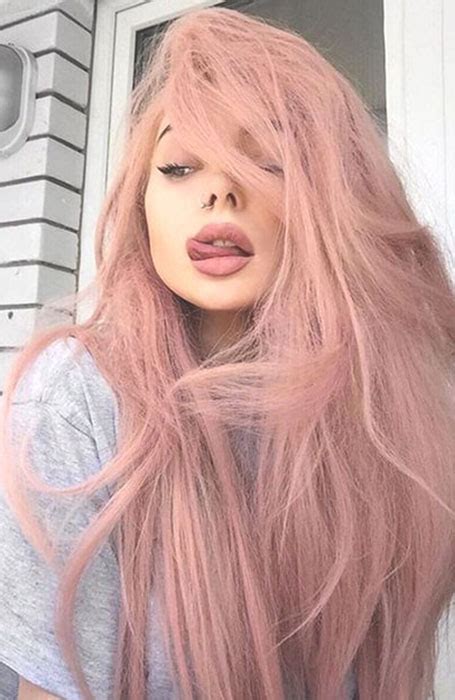Introduction

Light pink hair is a captivating and trendy shade that has captivated the hearts of fashion-forward individuals. With its vibrant hue and versatility, light pink hair offers endless possibilities for self-expression and style experimentation.
History of Hair Light Pink
The origins of light pink hair can be traced back to the 1980s, when punk and new wave subcultures embraced bold and unconventional hairstyles. In the 1990s, grunge culture popularized pink-tinged hair among teenagers and young adults. However, it was not until the early 2000s that light pink hair emerged as a mainstream trend, thanks to celebrities such as Gwen Stefani and Katy Perry.
Types of Hair Light Pink
- Pastel Pink: A soft and subtle shade of pink that creates a whimsical and ethereal look.
- Baby Pink: A pale and delicate pink that is ideal for those who prefer a more natural and toned-down hue.
- Bubblegum Pink: A bright and vibrant pink that exudes youthfulness and energy.
- Fuchsia Pink: A deep and intense pink that makes a bold statement.
- Rose Gold Pink: A warm and metallic pink that combines the elegance of rose gold with the playful spirit of pink.
Who Suits Hair Light Pink?
Light pink hair complements a variety of skin tones and eye colors. Consider the following factors when deciding if light pink hair is right for you:
Skin Tone:
- Fair skin: Light pink hair can enhance the natural glow of fair skin and create a delicate and ethereal look.
- Medium skin: Light pink hair can add warmth and radiance to medium skin tones.
- Dark skin: Light pink hair can provide a subtle contrast to darker skin tones and create a chic and sophisticated effect.
Eye Color:
- Blue eyes: Light pink hair can accentuate the blue in your eyes and create a captivating and icy look.
- Green eyes: Light pink hair can highlight the emerald or forest green in your eyes and create a unique and alluring effect.
- Brown eyes: Light pink hair can add depth and warmth to brown eyes.
How to Achieve Hair Light Pink
- Bleaching: The first step to achieving light pink hair is to bleach your hair to a level 9 or 10. This means that your hair must be light enough to absorb the pink dye effectively.
- Toning: Once your hair is bleached, it is time to apply a pink toner. Toners are semi-permanent dyes that deposit color without damaging the hair shaft.
- Maintenance: Light pink hair requires regular touch-ups to maintain its vibrant hue. Use color-safe shampoo and conditioner, and reduce the frequency of heat styling.
Benefits of Hair Light Pink
- Bold and Expressive: Light pink hair is a bold and unique way to express yourself and stand out from the crowd.
- Versatile: Light pink hair can be styled in countless ways, from soft waves to edgy braids, making it suitable for a variety of occasions.
- Flattering: Light pink hair can complement a wide range of skin tones and eye colors, making it universally flattering.
Risks of Hair Light Pink
- Damage: Bleaching your hair to achieve light pink can damage the hair shaft, especially if it is not done professionally.
- Fading: Light pink hair is known to fade quickly, requiring frequent touch-ups.
- Brassiness: If your hair is not toned properly, it can develop a brassy or orange hue.
Alternatives to Hair Light Pink
If you are not ready to commit to full-on light pink hair, consider these alternatives:
- Pink Ombre: A gradual transition from natural hair to light pink at the ends.
- Pink Highlights: Subtle streaks of light pink that add color and dimension to your hair.
- Pink Toner: A temporary solution that deposits a sheer pink hue on your hair, lasting up to 2 weeks.
Conclusion
Light pink hair is a captivating and versatile color that can transform your look and boost your confidence. Whether you choose a subtle pastel shade or a vibrant bubblegum pink, this trend is sure to turn heads and make a lasting impression.
